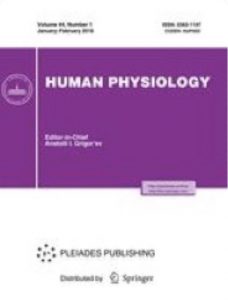Publications

Comparative Study of the Lower Limb Muscle Tone under the Conditions of Five-Day Support Unloading Coupled with Different Regimens of Electromyostimulation
Authors: L.E.Amirovaa, N.Yu.Osetskiya, N.V.Shishkina, I.I.Ponomareva, I.V.Rukavishnikova, I.B.Kozlovskayaa, and E.S.Tomilovskayaa,
Affiliations:
Institute of Biomedical Problems, Russian Academy of Sciences, Moscow, Russia
Journal: Human Physiology - 2020, Vol. 46, No. 4, pp. 391–400 (DOI: 10.1134/S0362119720040027)
-
Field & Applications:
- Medical
- Musculoskeletal rehabilitation
- Physiotherapy
- Space medicine / Gravitational physiology
- Sport
- Muscle development / Performance
The method of electromyostimulation is diverse in its manifestation and is widespread in medicine and sports. One of the approaches to assessing the effectiveness of this method is a muscle tone study, because it is known that chronic electrical stimulation directly affects the characteristics of the muscle, changing its strength, endurance, fiber mass, and oxidative capabilities. In our study, we compared the effects of daily low-(25 Hz) and high-frequency (50 Hz) electromyostimulation with the control group under the conditions of five-day Dry Immersion in three independent groups of subjects. There was a tendency for the muscle tone in the mm. soleus, gastrocnemius, and tibialis anterior to decrease by the end of immersion in the control group. Low-frequency stimulation was more effective in preserving the muscle tone of the soleus muscle, while high-frequency stimulation was more effective for the gastrocnemius muscle. Neither low-frequency nor high-frequency stimulation prevented a decrease in the lower leg tibialis anterior muscle tone, although immediately after completion of immersion, its tone was significantly higher than the baseline values compared to the control group. The use of daily sessions of electromyostimulation during five-day support unloading selectively prevents a decrease in the tone of the lower leg muscles. Low-frequency electromyostimulation is most preferable for muscles with the predominant content of slow fibers, while high-frequency stimulation, for fast fibers.
Keywords: support unloading, low-frequency electromyostimulation, high-frequency electromyostimulation, muscle tone, Dry Immersion
The use of daily EMS sessions in the course of five-day support unloading can prevent a decrease in the tone of the lower leg muscles. LF EMS is most effective in maintaining the tonic characteristics of postural muscles (consisting mainly of slow fibers), and HF is beneficial for phasic ones (consisting mainly of fast fibers). For clinical practice, the combined use of both HF and LF EMS can be recommended, thus increasing the range of effects.


